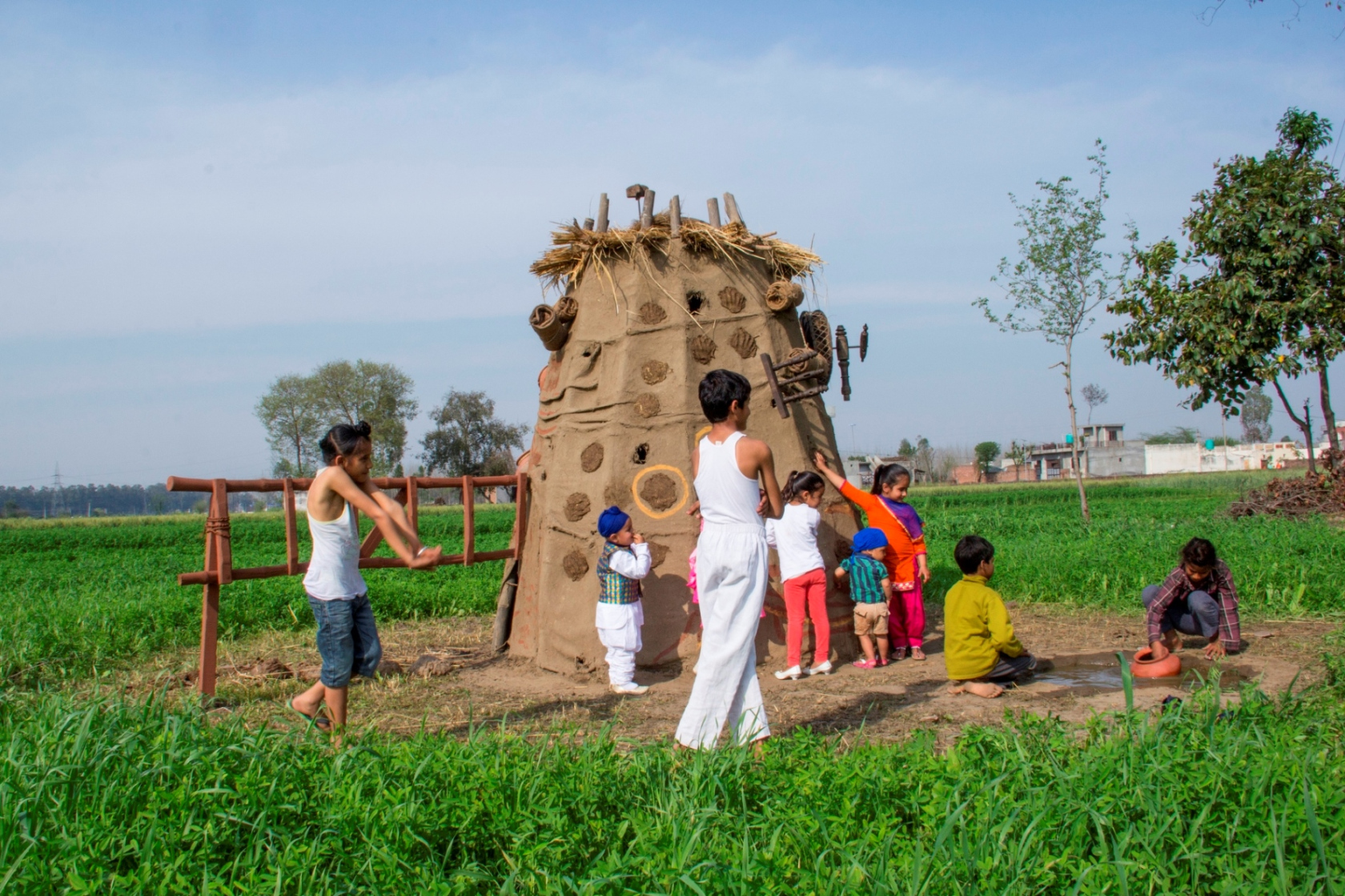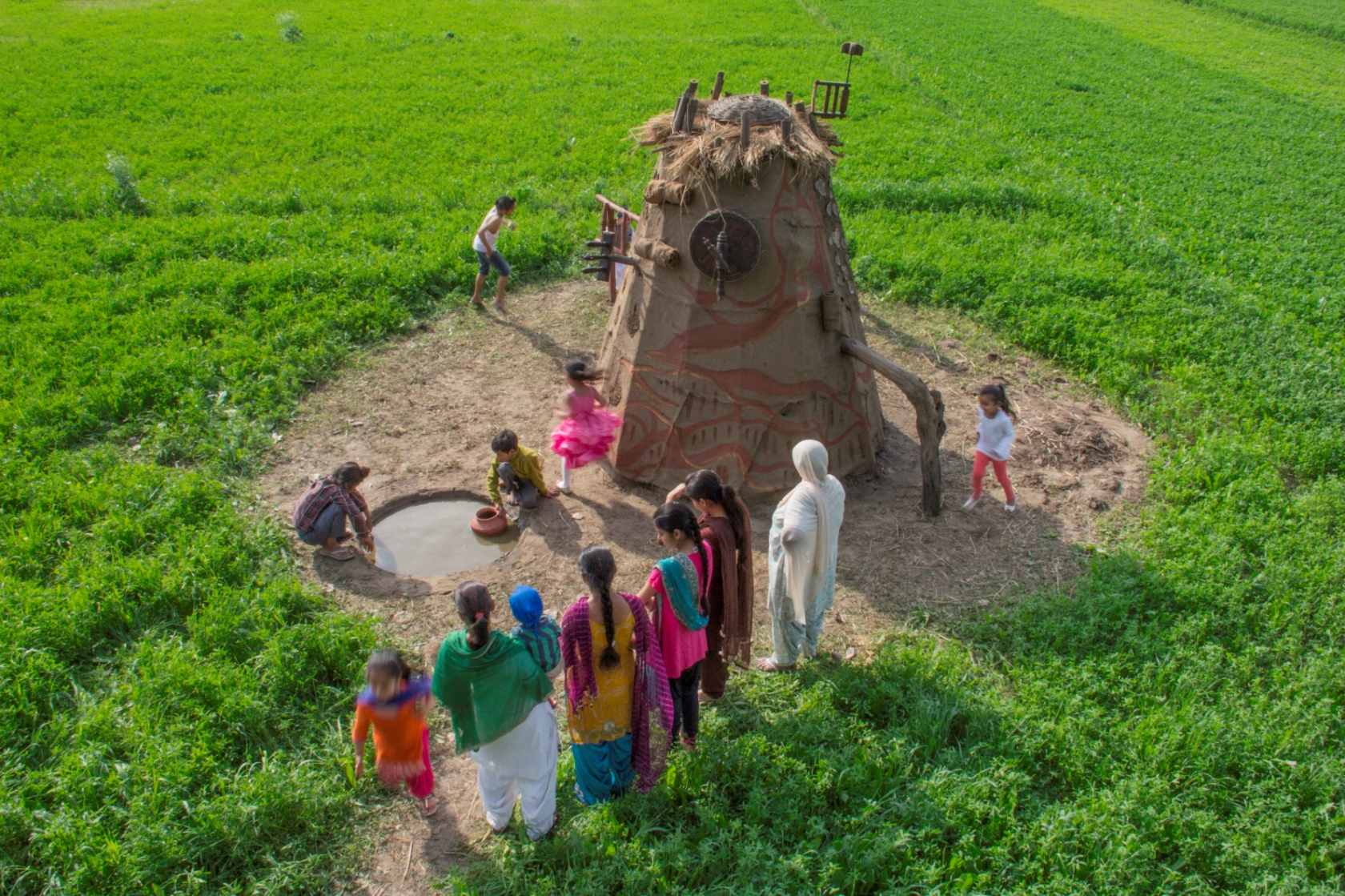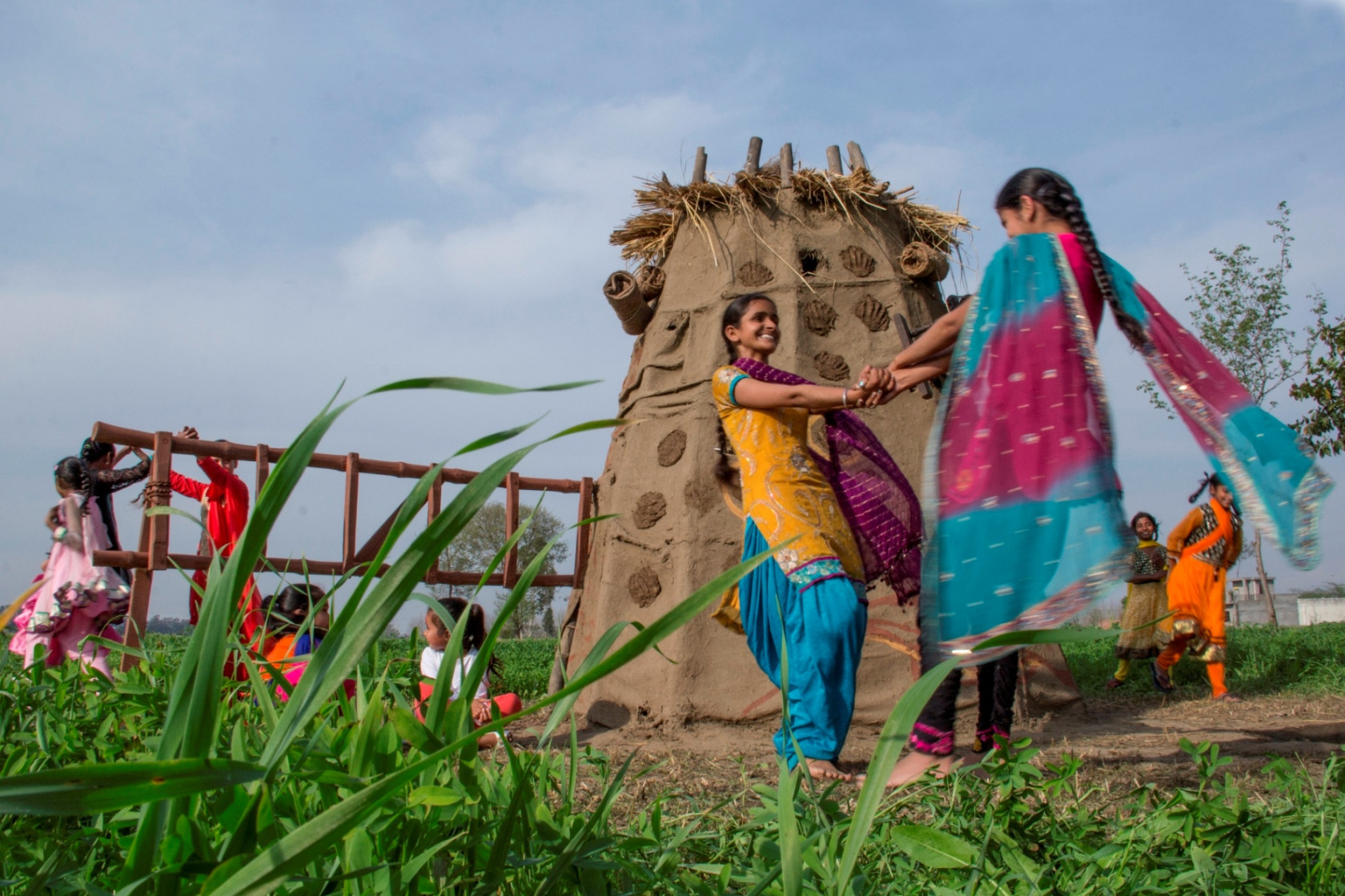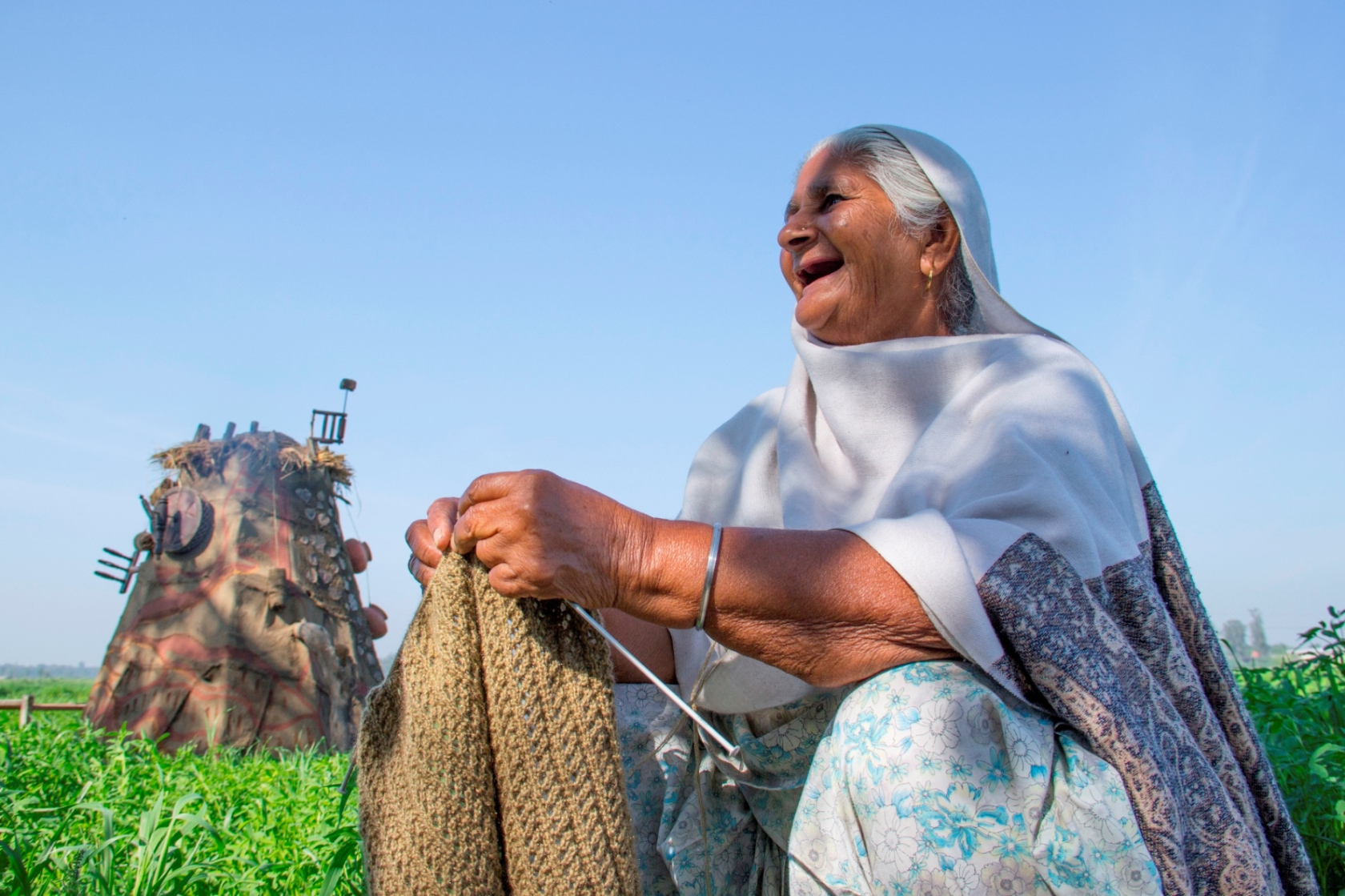‘Landmark: A Vernacular Installation’ | Punjab, India
Indian artist Darshan Singh Grewal has created a landmark as a reminder of the value of cultural heritage and of the traditional crafts which are slowly being overshadowed by technological advances.
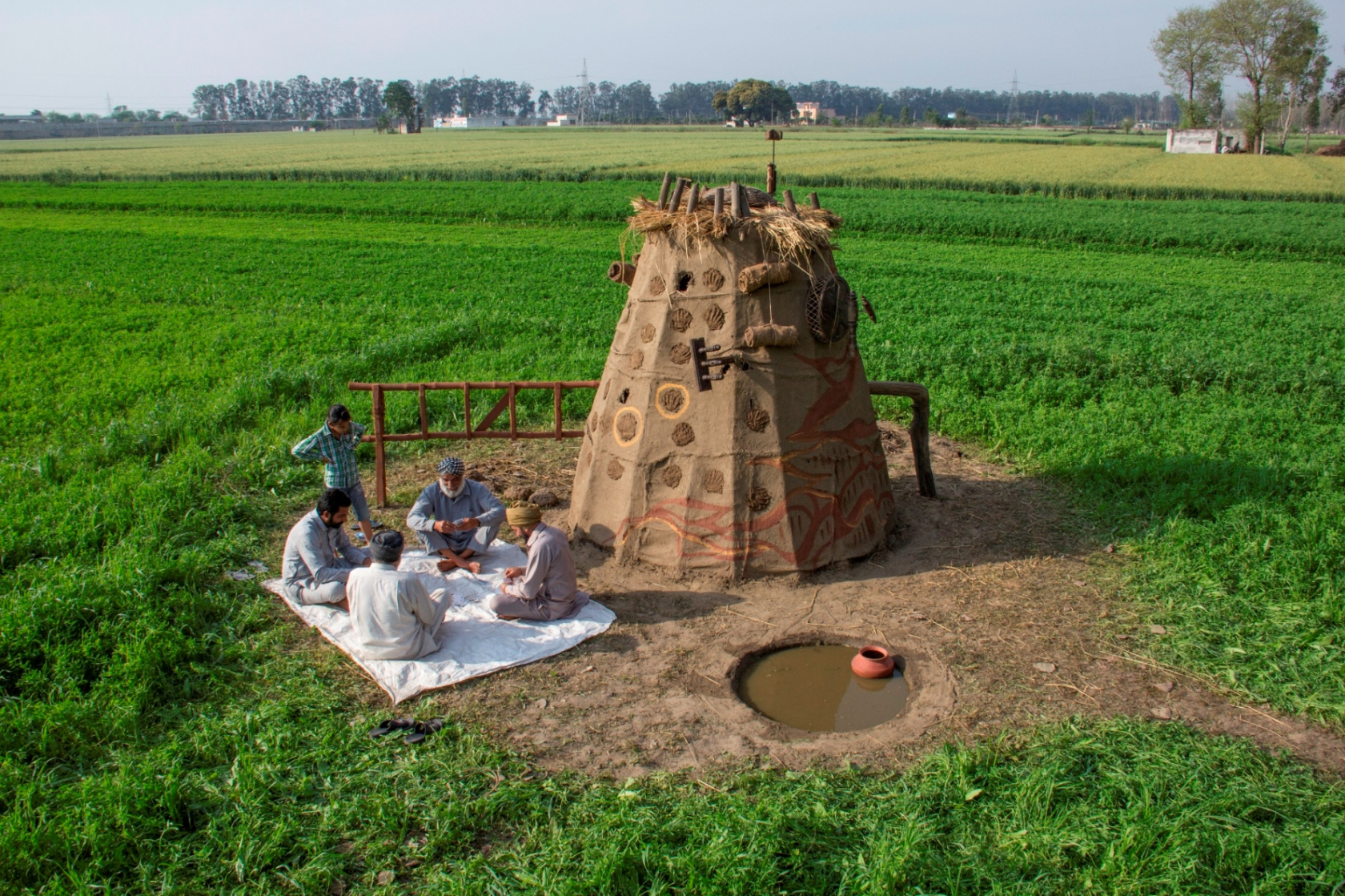 Landmarks are an integral part of Indian stories, imagination and memories. They appear in our conversation and description of folklore. Landmarks belong to all. They belong to the whole community around them.
Landmarks are an integral part of Indian stories, imagination and memories. They appear in our conversation and description of folklore. Landmarks belong to all. They belong to the whole community around them.
Many families who live in cities have roots in the villages where their ancestors lived, and going back to the village is special to all those who relish the fragrance of mud, starry nights, farms, fresh air, and simple rustic lives. People delight in sharing anecdotes and stories of their villages, their memorable landmarks, shops, streets or marketplaces where their forefathers use to meet, play and spend evenings together.
 Even though I grew up in a city, I love to go back to the country, spend time in farms, walk in gullies (village streets), watch activities and assimilate experiences through my art.
Even though I grew up in a city, I love to go back to the country, spend time in farms, walk in gullies (village streets), watch activities and assimilate experiences through my art.
This project, realized in collaboration with my friends Arun Bawa and Jagmeet Singh Bhatti in the course of four days, is an effort to explore an earthen craft process by creating a life-size sculpted landmark using vernacular elements and antique objects as a symbol of tangible heritage and associated intangible traditional values.
The sculpted structure and its aesthetic form has evolved in my imaginative process, but its basic form was inspired by typical conical enclosures, called ‘Guhara’ and ‘Kupp’, crafted by villagers in the Punjab countryside. ‘Guharas’ were used to store cow dung cake and ‘Kupps’ were made of dry wheat grass and used to store waste of wheat crop that would later feed cattle and buffaloes.
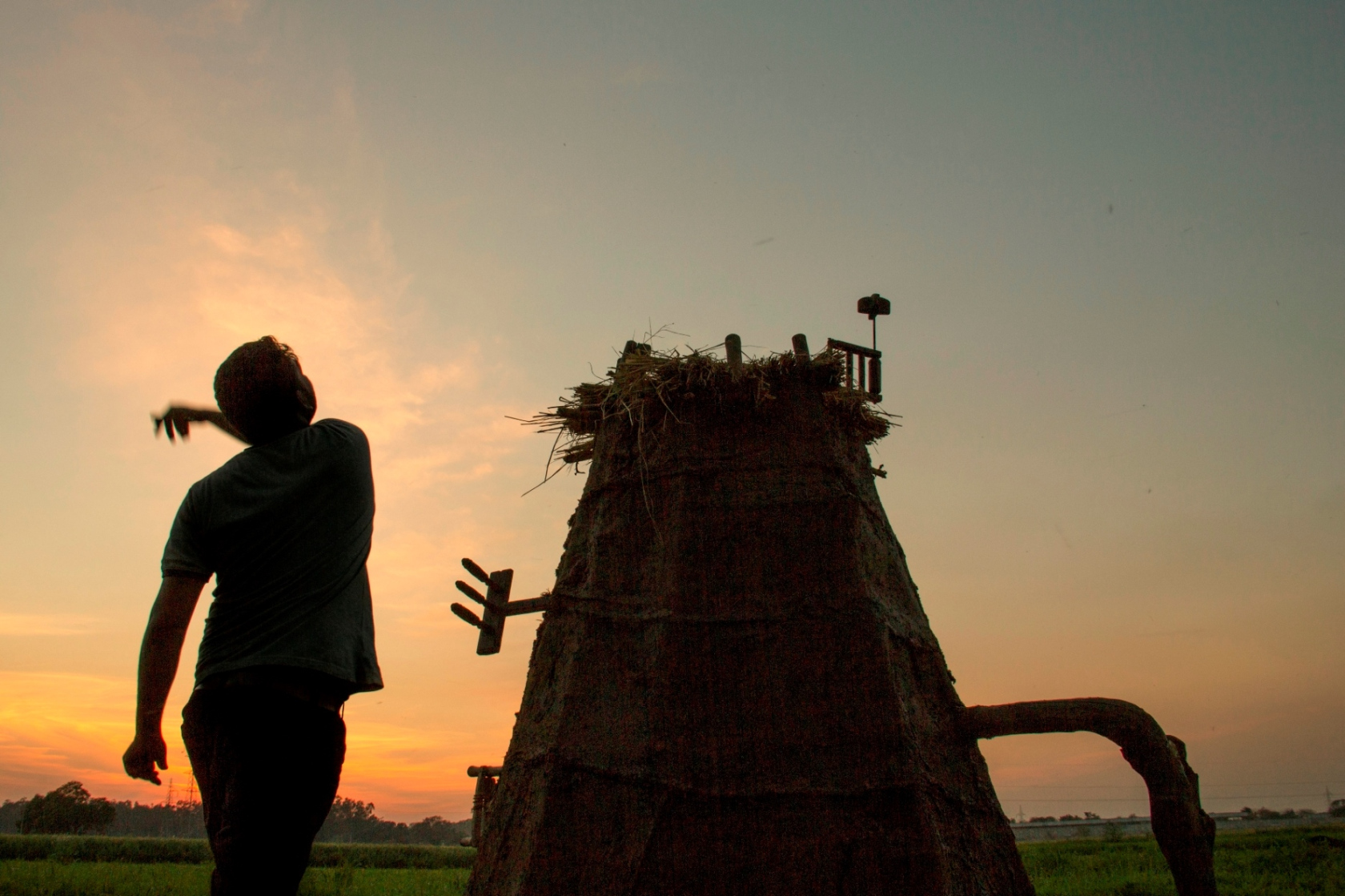 The old broken craft objects used in the sculpture are symbols of tangible craft heritage: the ‘Charkha’, for example, is a traditional spinning wheel, ‘Madhani’ is a traditional churn, and other rural elements, like earthen pots, bamboo ladder, and cow dung cakes over the surface represent vernacular heritage. Due to the advancement in technology and the employment of machines, the handcrafted ‘Charkha’ and ‘Madhani’ are no more in use; the whole lifestyle is slowly changing; now these ethnic objects have no functional value. I have tried to give them another life by using them as an integral part of an art installation. The purpose is to visually revive and conserve the value of traditional craft and making them visible to young generations of villagers. This kind of sculpture in the fields may help young kids to connect with the wisdom of their cultural tradition, and inspire them to explore the values and folklore associated to it.
The old broken craft objects used in the sculpture are symbols of tangible craft heritage: the ‘Charkha’, for example, is a traditional spinning wheel, ‘Madhani’ is a traditional churn, and other rural elements, like earthen pots, bamboo ladder, and cow dung cakes over the surface represent vernacular heritage. Due to the advancement in technology and the employment of machines, the handcrafted ‘Charkha’ and ‘Madhani’ are no more in use; the whole lifestyle is slowly changing; now these ethnic objects have no functional value. I have tried to give them another life by using them as an integral part of an art installation. The purpose is to visually revive and conserve the value of traditional craft and making them visible to young generations of villagers. This kind of sculpture in the fields may help young kids to connect with the wisdom of their cultural tradition, and inspire them to explore the values and folklore associated to it.
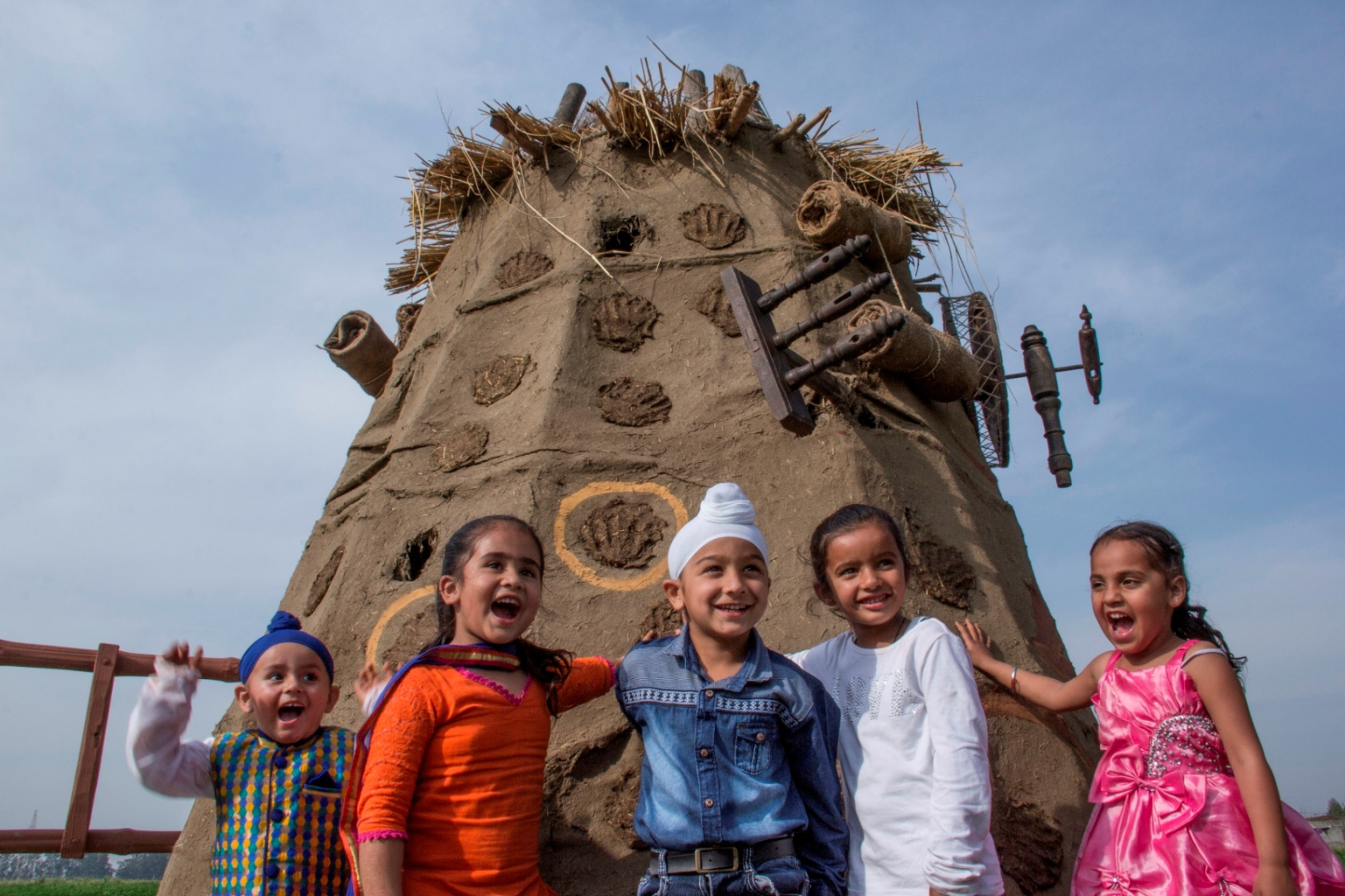 I am planning to create more of these vernacular installations, both in the fields and in public activity spaces in villages, involving and collaborating with local communities and kids.
I am planning to create more of these vernacular installations, both in the fields and in public activity spaces in villages, involving and collaborating with local communities and kids.
Darshan Singh Grewal graduated in Architecture form DCR University, Murthal, Haryana, India. He explores various dimensions of life culture through experimental art practices that encompasse poetry, visual art, craft, spatial installation, performance art and film.

